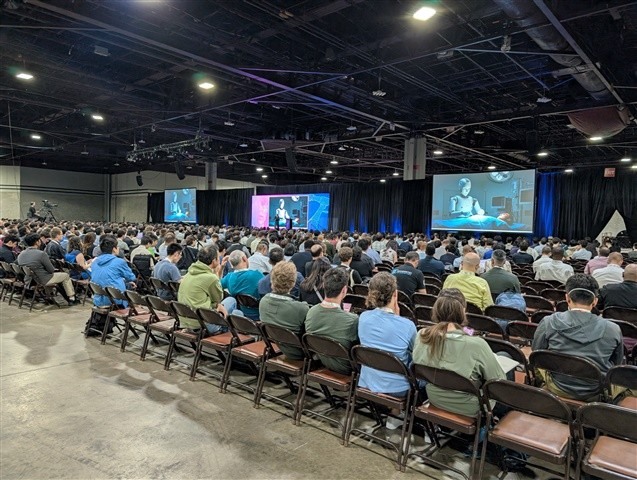If you're in the robotics world, you probably know that ICRA (International Conference on Robotics and Automation) is the place to be. For over 40 years, ICRA has set the stage for the biggest breakthroughs and boldest ideas in robotics, and this year was no exception. Hosted in Atlanta, Georgia, the 2025 edition attracted an incredible 7,000 attendees, making it one of the largest yet.
From tech giants to early-stage researchers, the halls of the Georgia World Congress Center were buzzing with ideas, innovations, and more than 150 exhibitor booths, showcasing the latest in robotic technology. The exhibition floor also featured tech talk stages, where companies and researchers shared insights in a more interactive format.
A Universe of Knowledge in Parallel
One of the most exciting—and at times overwhelming—aspects of ICRA is the breadth of the technical sessions. With more than 20 parallel sessions running throughout the day, attendees had to make some tough choices. Sessions covered everything from cutting-edge theory to real-world applications. Highlights included tracks on Field Robotics—with a special focus on Forestry and Mining—as well as Robotics and Automation in Construction and Industry. These application-focused talks offered a welcome counterpoint to the deep technical dives, showing how robotics is shaping the world around us.

The Human Side of Robotics
One of the standout events for me was the "Arts in Robotics" evening, held on Wednesday. It brought a refreshing and deeply inspiring human element to the conference. The event featured performances by invited artists who blend robotics with creative expression.
The highlight? Dr. Merritt Moore, a rare combination of professional ballet dancer and quantum physicist, who captivated the audience with her piece Machine Yearning. During the pandemic, she began programming robots to dance with her—and the result is as beautiful as it is thought-provoking. Other performers included Smashworks Dance with Austringer, and Naomi Fitter, who delivered a comedic stand-up routine with a NAO humanoid robot—yes, it was as delightful as it sounds.
The Exhibition: Robots Up Close
The exhibition hall was a microcosm of the future. Humanoid robots were everywhere—some on display, others actively demonstrating impressive skills like running, kicking footballs, and even boxing. What stood out most was the progress in anthropomorphic hands and tactile sensors. The variety and sophistication of these robotic hands signal a significant step forward in how robots will interact with the physical world—and with us.

Deep Dives and New Connections
ICRA isn’t just about presentations—it’s also a platform for meaningful exchange. The week began and ended with workshops that brought together academia, industry, and government. I attended sessions on Robotics and Automation in Nuclear Environments, Robotics in the Wild, and The Future of Intelligent Manufacturing: From Innovation to Implementation! These workshops were not only intellectually stimulating but also valuable networking opportunities, helping to bridge the gap between research and real-world deployment.
Final Takeaways
ICRA 2025 in Atlanta was a vivid reminder of the breadth, depth, and diversity of the robotics field. From technical deep dives to artistic collaborations, and from industrial applications to humanoid interactions, the conference painted a compelling picture of where robotics is headed.
Whether you're an engineer, researcher, artist, or entrepreneur, ICRA continues to be the beating heart of the global robotics community—and I can’t wait to see where it leads us next.
-

Alan Rossney
-
Cancel
-
Vote Up
0
Vote Down
-
-
Sign in to reply
-
More
-
Cancel
Comment-

Alan Rossney
-
Cancel
-
Vote Up
0
Vote Down
-
-
Sign in to reply
-
More
-
Cancel
Children